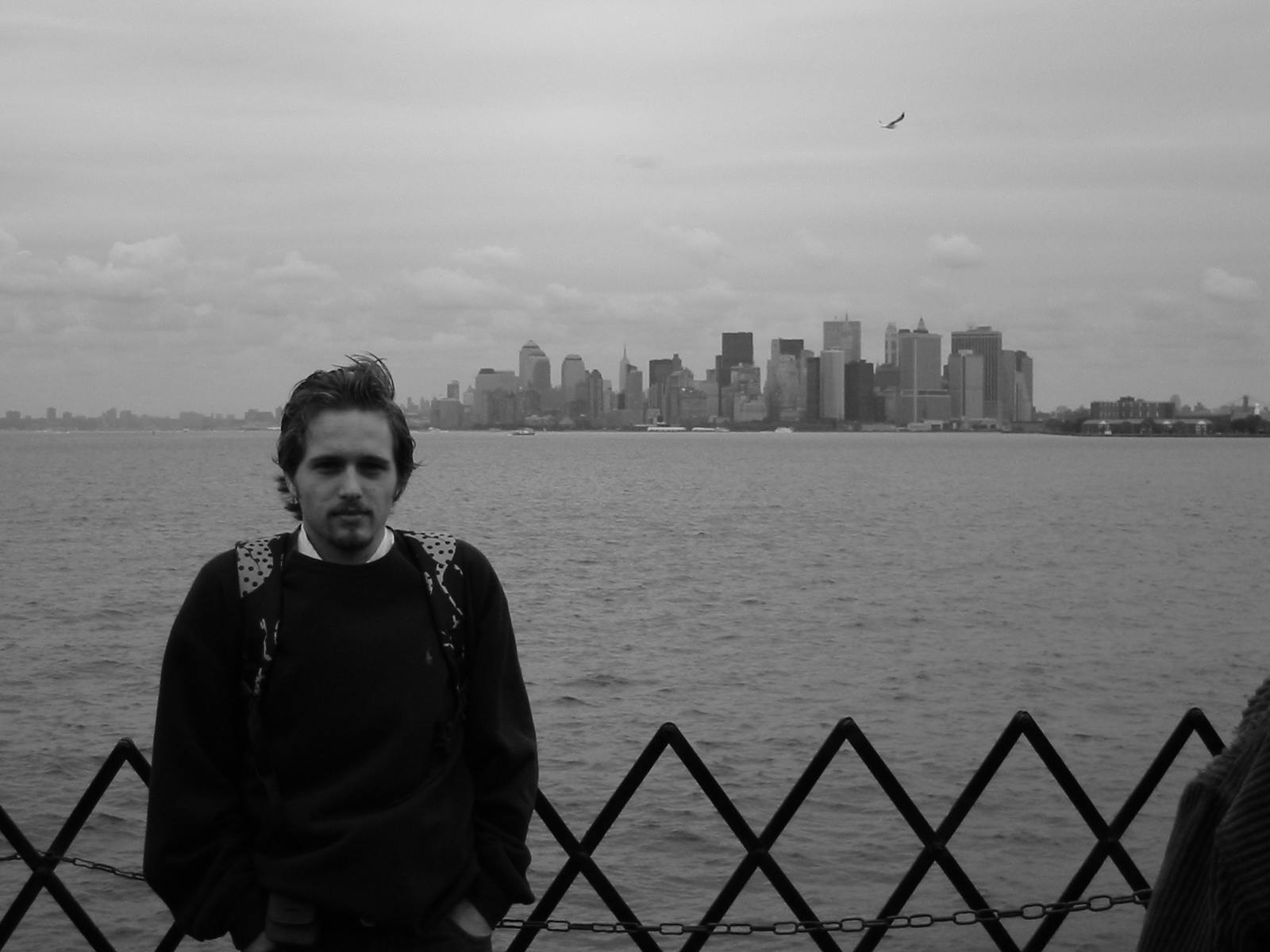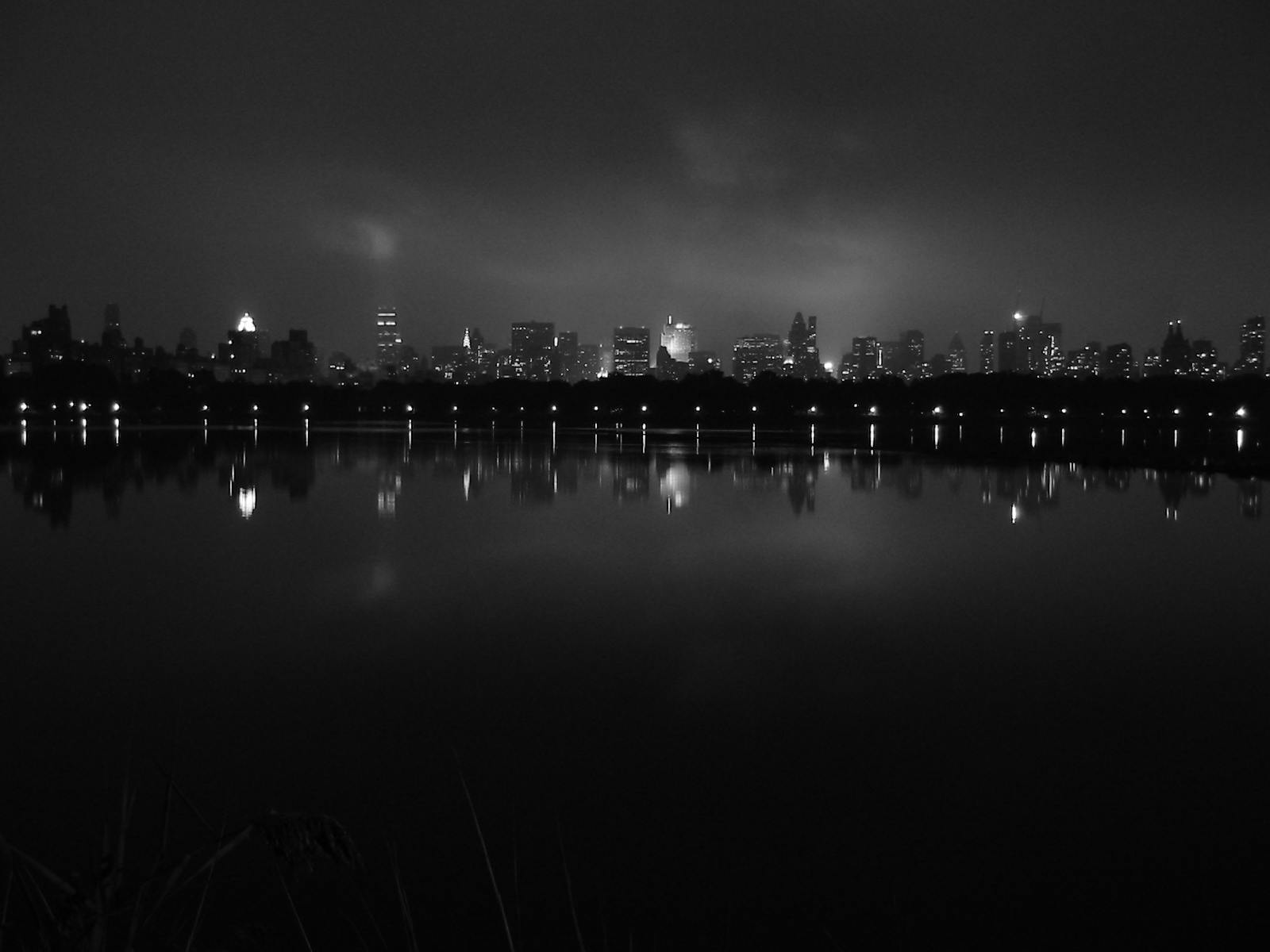Sollte es die Zeit erlauben, widme ich mich auch ein bisschen dem Künstlerischen
USA
Die folgenden Fotos wurden in den USA aufgenommen. Mehr dazu ist hier zu finden.
Washington Monument

Washington D.C. - Washington Monument - aufgenommen am 05.10.2002 um 14:19 Uhr
Informationen über das Monument (im Original):
The Washington Monument at 555 feet, 5 1/8 inches, towers over everything in the Nation's Capital and reminds us of the immensity of George Washington's contribution to this republic. The monument is a classic obelisk and has little in common with the colonnaded temple designed by Robert Mills to house statues of America's heroes. The cornerstone was laid July 4, 1848, in a ceremony attended by President James K. Polk and other dignitaries, among whom were Representatives Abraham Lincoln and Andrew Johnson. The monument rose steadily to 152 feet financed by popular subscriptions collected by the Washington Monument Society until funds ran out in 1854. It stood unfinished for nearly 25 years until President Ulysses S. Grant approved an act authorizing the Federal Government to complete the projekt. Lt. Col. Thomas Casey, U.S. Army Corps of Engineers, took control, simplified Mills' design, and began construction. In December 1884 a 3,300-pound marble capstone was placed on the obelisk and topped with a 9-inch pyramid of cast aluminium, a rare metal in 1884. (aus Faltblatt National Park Service)
Skyline of Manhattan

New York City - Manhattan Skyline (Staten Island Ferry) - aufgenommen am 10.10.2002 um 15:15 Uhr
Informationen über New York City:
New York ist mit mehr als 8 Millionen Einwohnern die bevölkerungsreichste Stadt der Vereinigten Staaten. Um sie vom gleichnamigen Bundesstaat New York zu unterscheiden, zu dem sie gehört, wird sie New York City genannt.
Ihr Gebiet von 831 Quadratkilometern umfasst die fünf Stadtbezirke (boroughs) Manhattan, The Bronx, Brooklyn, Queens und Staten Island. Diese sind in weitere Stadtteile gegliedert. Die Metropolregion New York mit 22.313.756 Einwohnern auf 27.084 Quadratkilometern (Stand: 1. Januar 2005) ist einer der bedeutendsten Wirtschaftsräume der Erde. Die Stadt besitzt eine große Anzahl an Sehenswürdigkeiten, 500 Galerien, etwa 150 Museen, mehr als 100 Theater, sowie über 17.000 Restaurants.
Sie gilt als einer der bedeutendsten Handelsplätze der Welt, ist Sitz vieler internationaler Konzerne und Organisationen (so auch der Vereinten Nationen), wichtiger Hafen an der amerikanischen Ostküste und genießt Weltruf in den Bereichen Kunst und Kultur.
Ihre Spitznamen lauten Big Apple und Gotham. (aus www.wikipedia.de)
Central Park

New York City - Skyline (Central Park) - aufgenommen am 13.10.2002 um 18:55 Uhr
Informationen über den Central Park:
Der Central Park in New York City wurde 1853 als Landschaftspark eingerichtet und wird seitdem auch als Volkspark genutzt. Er erstreckt sich heute auf einer Länge von 4 km von der 59th bis zur 110th Straße und 750 m Breite zwischen der 5th und der 8th Avenue, und wird auch die grüne Lunge New Yorks genannt. Mit ca. 340 ha nimmt er etwa 5% der Bodenfläche Manhattans ein. (aus www.wikipedia.de)
Statue of Liberty und Ellis Island

New York City - Statue of Liberty und Ellis Island (Clinton Park) - aufgenommen am 14.10.2002 um 18:18 Uhr
Informationen über Ellis Island (im Original):
More than a hundred million Americans can claim ancestors who came through Ellis Island. "There were probably as many reasons for coming to America," wrote President John F. Kennedy in A Nation of Immigrants, "as there were people woh came." Religious persecution, political strife, unemployment, family connections, the lure of adventure: these were the circumstances of the greatest migration in modern history, when shipload after shipload of people, mostly Europeans, came to the United States. Beginning in 1892, the majority - some 12 million - took their first steps toward becoming Americans at Ellis Island. Today Ellis Island is a memorial to all who have made this nation their adopted home. Here we can see where the Old World met the New.
Through America's Gate
In the decade after the American Revolution, about 5,000 people immigrated to the United States every year. By the early 1900s, that many arrived at Ellis Island each day, with a record 11,747 on April 17, 1907. All told, some 12 million immigrants came through Ellis Island.
The immigration station at Ellis Island opened on January 1, 1892. Five years later the wooden structure burned, along with many immigration records. On December 17, 1900, a new, fireproof French Renaissance-style building welcomed 2,251 new arrivals. Ferries and barges brought "steerage" passengers out to Ellis from steamships. (First- and second-class passengers were quickly processed on board ship.) Doctors watched as immigrants entered the building and climbed the stairs; a limp, labored breathing, or other suspected troubles warranted further medical exams. In the Registry Room, inspectors questioned each individual. Included among the 29 questions were name, home town, occupationm, destination, and amount of money they carried. A Jewish immigrant from Russia recalls the uniforms worn by officials: "We were scared of uniforms. It took us back to the Russian uniforms that we were running away from." Those allowed to pass continued downstairs, exchanged money, bought provisions and perhaps rail tickets. A third stayed in New York City; others headed elsewhere. Only one to two percent were denied entry.
After the inspection process was transferred to U.S. consulates in the 1920s, only a small number of detained immigrants passed through Ellis Island. In 1954 it closed completely. Buildings deteriorated until restoration began in the 1980s. Today at the Ellis Island Immigration Museum, you can retrace the steps of those who chose a future as Americans. (aus Faltblatt National Park Service)
Statue of Liberty

New York City - Statue of Liberty (Liberty Island) - aufgenommen am 14.10.2002 um 16:00 Uhr
Informationen über Statue of Liberty (im Original):
A Gift of Friendship
The colossal figure of a woman striding with uplifted flame across the entrance to the New World is a symbol of America to most people, but she was conceived as an expression of French republican ideals, The idea for such a monument was first discussed in 1865 at the Paris home of Edouard René Lefebvre de Laboulaye, legal scholar and authority on America. Republicans like Laboulaye chafed under the repressive regime of Napoleon III and looked with admiration to America, a thriving republic which had just survived a civil war and was becoming a prosperous industrial nation. America had achieved a delicate balance between liberty and stability that for so long had eluded France. Laboulaye envisioned a monument that would keep alive the republican ideal in France and strengthen friendship between two peoples who shared that ideal. Aware of how potent a symbol the human embodiment of liberty could be, as in the painting by Eugene Delacroix of Liberty Leading the People, Laboulaye discussed his idea with one of his dinner guests, sculptor Auguste Bartholdi. Bartholdi traveled to America in 1871 to propose the monument and choose a site.
An Idea Given Form
The monument would be a sincere gift to America, but Laboulaye was also making a virtue of necessity. He knew that a strong symbol of liberty was too inflammatory to be tolerated by the emperor within the boundaries of France. Bartholdi saw that New York Harbor, as a major entry point to America, had the right symbolic value.
While Bartholdi was in America, events in France helped to make the statue a reality. After Napoleon III was dethroned following the defeat of France by Prussia in 1871, monarchists and repulbicans contended for the nation's soul. Laboulaye and other republicans saw the statue as the best way to establish the idea of a republican France. The plan to build the statue was announced in late 1874, a few months before France again became a republic. Even then, liberty was precarious, and the republicans knew the concept would have to be burned into the national consciousness with a poweful image. Bartholdi, the man given the task, was an academic sculptor driven by two obsessions, liberty and immensity. Inspired by ancient colossi, especially in Egypt, he wanted his statue of Liberty to be overpowering. He also had in mind the Colossus of Rhodes when he envisioned the monument at the entrance to a harbor.
After creating Liberty in a 1.25-meter clay model, Bartholdi began fabricating the statue in 1875. He enlarged the model in plaster several times until he had 300 full-sized sections. The skin of the statue was formed by the repoussé process, in which copper sheets 2.5 mm thick were hammered into shape against wooden forms matching the contours of the plaster sections. The engineering problems were solved brilliantly by Gustave Eiffel, already known for his daring bridge designs. A huge central wroughtiron pylon supported a secondary framework to which the statue's skin was attached with flexible iron bars. The skin thus "floated" on the pylon, strong enough to withstand high winds, yet resilient enough to expand and contract with changes in temperature. After its completion in June 1884, the statue stood in Paris until it was dismantled and sent to America early in 1885.
The Statue in America
Only one condition was placed on France's gift to America. The younger nation had to provide the statue's foundation and pedestal, designed by architect Richard M. Hunt. Public appeal for donations began in 1877, and in 1883 work began on the foundation, the largest concrete mass of its time. The statue was finished by 1884, but donations were not as generous as expected, and the completion of Hunt's pedestal ws in jeopardy. Those who could have afforded large contributions objected to the statue on aesthetic grounds, while the ordinary citizen regarded the statue as New York's problem, or a frivolity the rich should underwrite. Joseph Pulitzer, Hungarian immigrant and publisher of The World, took on the job of raising the money. Through his paper he blasted the rich for not donating and stressed the symbolic importance of the statue, soliciting contributions from the masses. The completed pedestal and statue were dedicated on October 28, 1886. (aus Faltblatt National Park Service)






